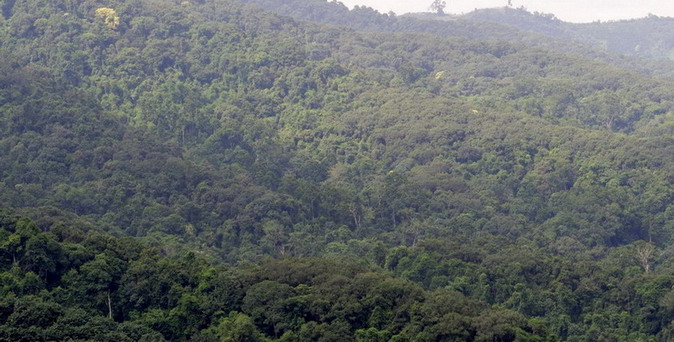The Janzen–Connell and the species herd protection hypotheses make specific predictions on the spatial placement of individuals of different species. One possibility to explore if observed spatial placement of trees is compatible with this hypothesis is to use techniques of spatial point pattern analysis.
Dr. CAO Min and his research team of Xishuangbanna Tropical Botanical Garden (XTBG) used point pattern analysis to analyze the spatial species distributions, interspecific species associations and their change across life stages among the twenty dominant species of the Xishuangbanna forest dynamics plot (101°34′E, 21°36′N) which was established in 2007 to test theories and hypotheses related to biodiversity maintenance. Their specific objectives were to explore if Janzen-Connell effects or species herd protection are potential mechanisms for structuring the species patterns in the dipterocarp tropical seasonal rain forest.
They investigated how the univariate and bivariate spatial patterns of twenty dominant tree species changed with life stage. Their results showed that the degree of spatial clumping in the twenty dominant species decreased from saplings, to poles, to adults. The reduction of spatial aggregation with life stages was indirect evidence of Janzen–Connell spacing effects. Species distribution maps and the torus translation test indicated some presence of habitat associations and niche assembly. The positive spatial associations among the tree species at small spatial scales suggested operation of species herd protection but might also be indicative of facilitative interactions.
Overall, their results suggested that Janzen–Connell spacing effects, habitat association, limited dispersal and species herd protection may contribute to shape the spatial patterns of the tree species in the tropical rainforest in Xishuangbanna, southwest China.
The study entitled “Spatial Distribution and Interspecific Associations of Tree Species in a Tropical Seasonal Rain Forest of China” has been published in PLoS ONE 7(9): e46074. doi:10.1371/journal.pone.0046074

The 20-ha forest dynamics plot in Xishuangbanna

